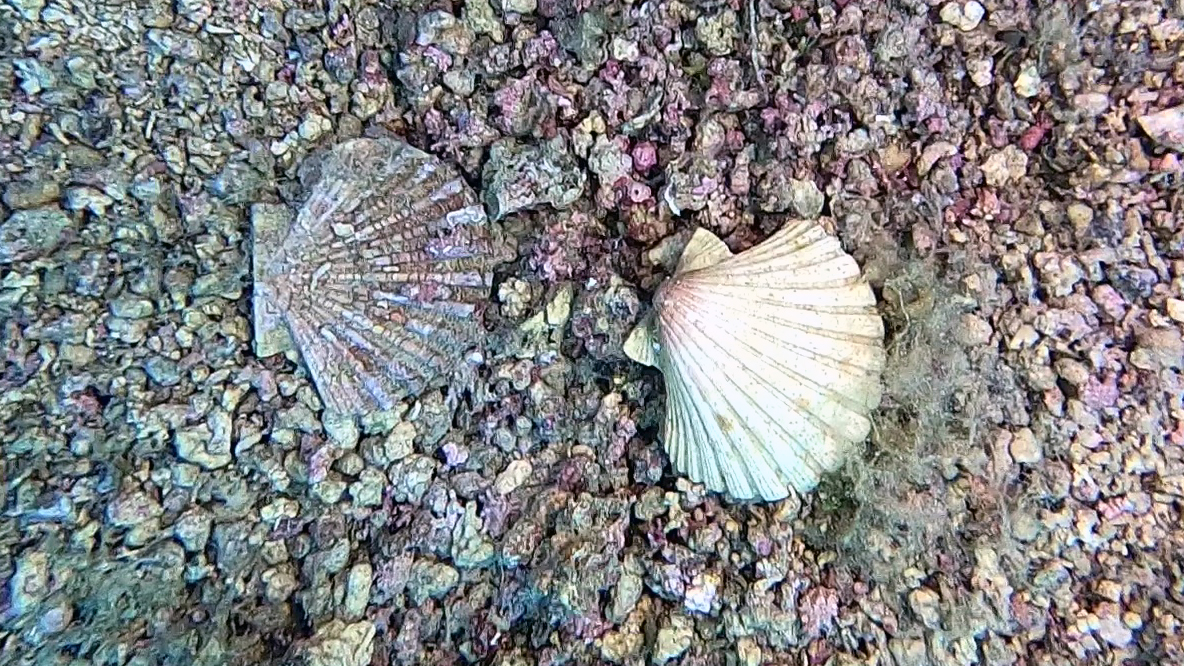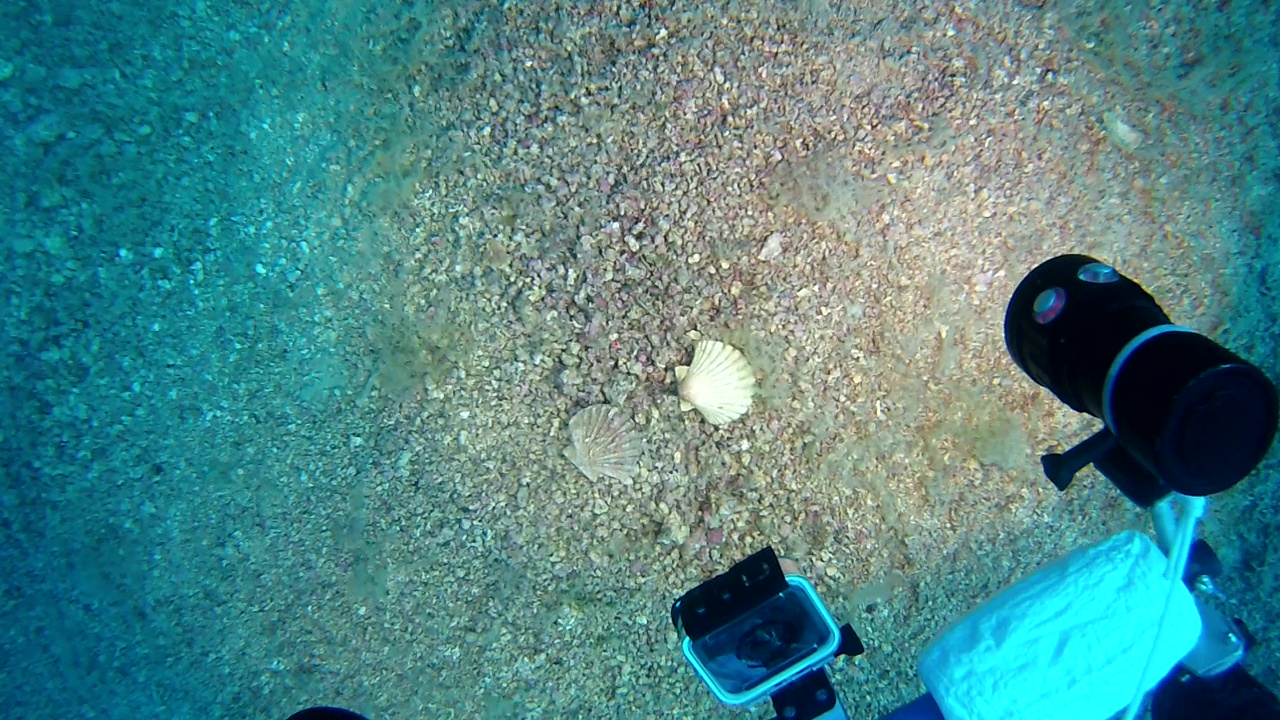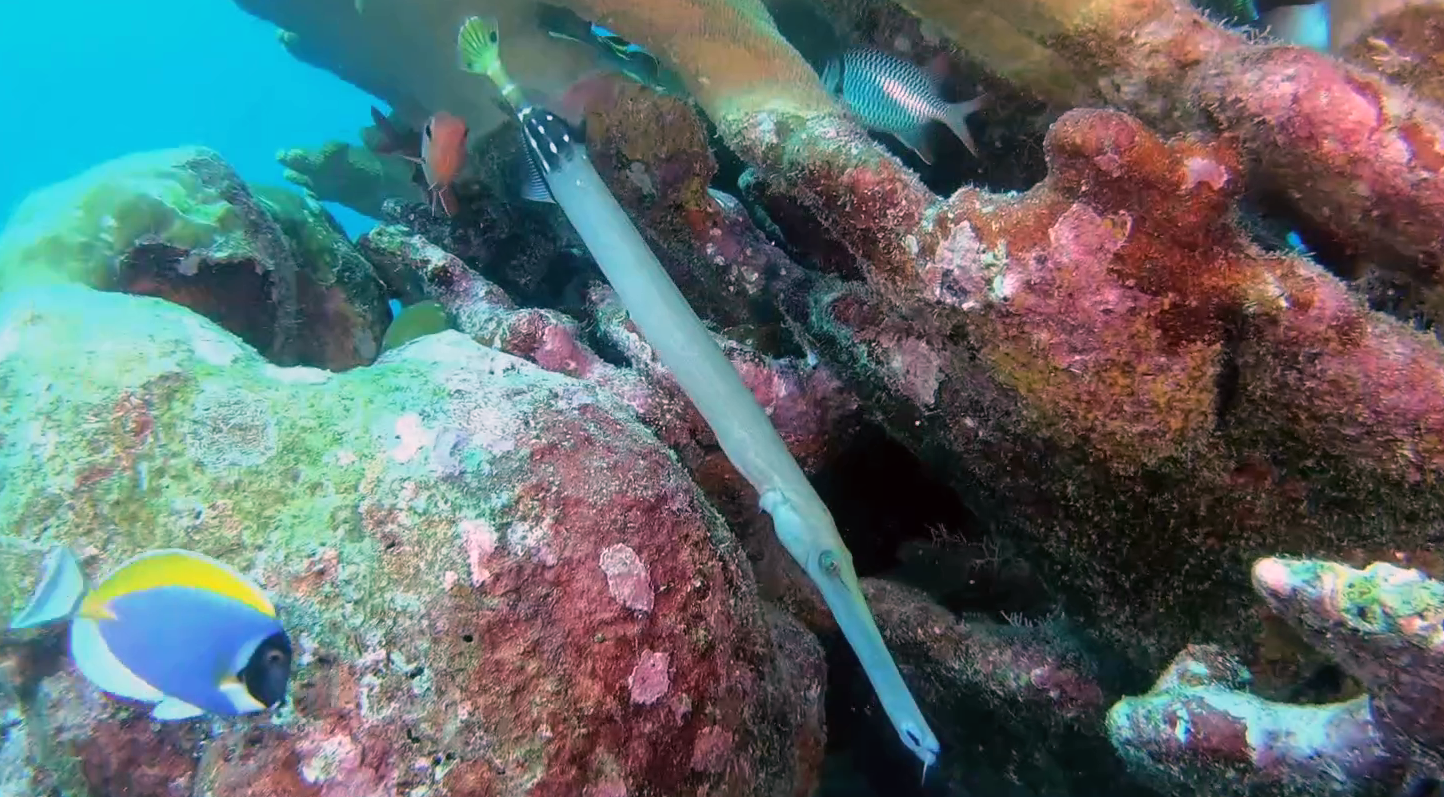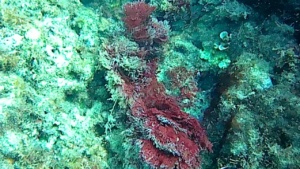This bivalve mollusc, Scallop (Mediterranean scallop) Pecten jacobaeus shell is rather sought after for the goodness of its meat and, not only by humans but above all by the Octopus (Octopus vulgaris) of which it is greedy like almost all molluscs.

Mediterranean scallop Pecten jacobaeus Pettine di mare Conchiglia di S.Giacomo Capasanta www.intotheblue.it
Scallop (Pecten jacobaeus, Linnaeus, 1758), is a bivalve mollusc of the Pectinidae family. Valves of the shell are different. The lower one, with which the animal rests on the bottom, is very convex and light in colour, while the upper one is flat and brown in colour. It reaches about 12-14 cm in size.

Mediterranean scallop Pecten jacobaeus Pettine di mare Conchiglia di S.Giacomo Capasanta www.intotheblue.it
Scallop has the peculiarity, rare in the animal world, of being equipped with elementary catadioptric eyes which work by reflection. The hermaphroditic reproduction of this mollusc takes place in the months of May and June giving rise to a small planktonic larva.
In Europe they live in the Mediterranean. In Normandy, Brittany, Scotland, Ireland and England lives a different species, called Pecten maximus. In Italy it is found between 25 and 200 meters deep in almost all sandy or sandy seas rich in debris. The young specimens live anchored to the seabed by means of filaments, while the adults move freely on the seabed by suddenly opening and closing the valves to allow a rapid release of water: this method allows the animal to move extremely quickly, even for long stretches.

Mediterranean scallop Pecten jacobaeus Pettine di mare Conchiglia di S.Giacomo Capasanta www.intotheblue.it
This ability to move quickly has led the Japanese to call this mollusk “snake fish“. However, not all Pectinidae species have this ability to move freely, indeed some species prefer static anchoring on rocks or intertwining marine plants. The way this animal moves gave its name to the scallop theorem in fluid mechanics.
Scallop is a hermaphrodite living being and is particularly appreciated when the gonads of both sexes, one coral orange and one ivory, are clearly visible.
The meats are tasty, both raw and cooked, even if for reasons of hygiene and the risk of infectious diseases it is not recommended to eat them raw, like all bivalves, since they are filter-feeding animals.
Similar to the scallop is the various scallop (Chlamys varia) which differs from it for its both convex valves.
https://it.wikipedia.org/wiki/Pecten_jacobaeus
https://en.wikipedia.org/wiki/Pecten_jacobaeus
Gallery
Video Gallery
 English
English Italiano
Italiano



